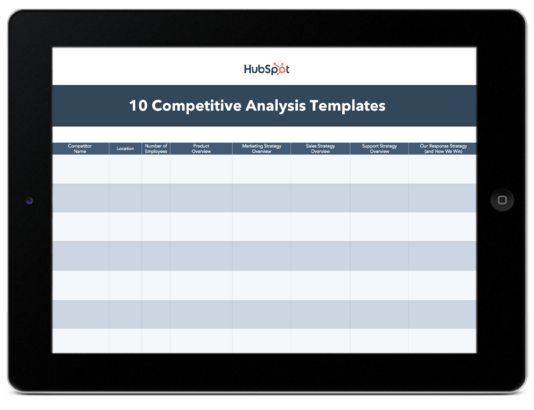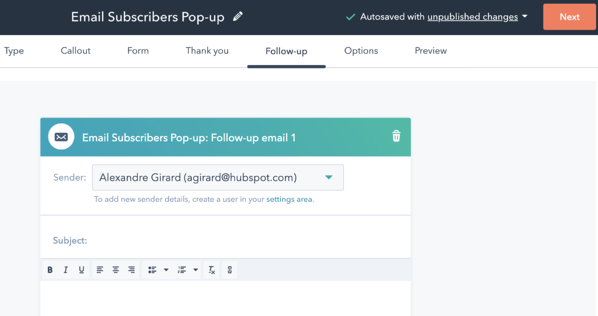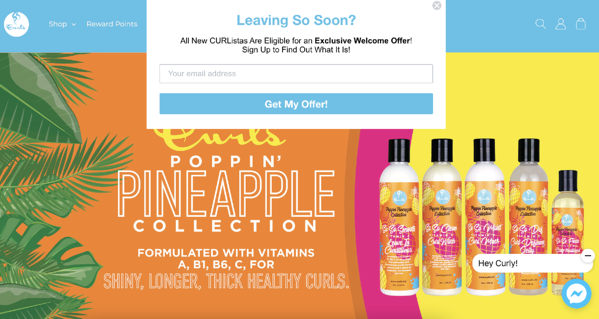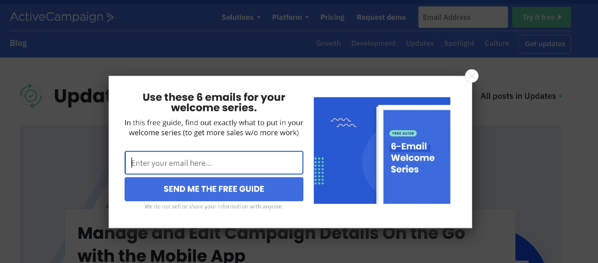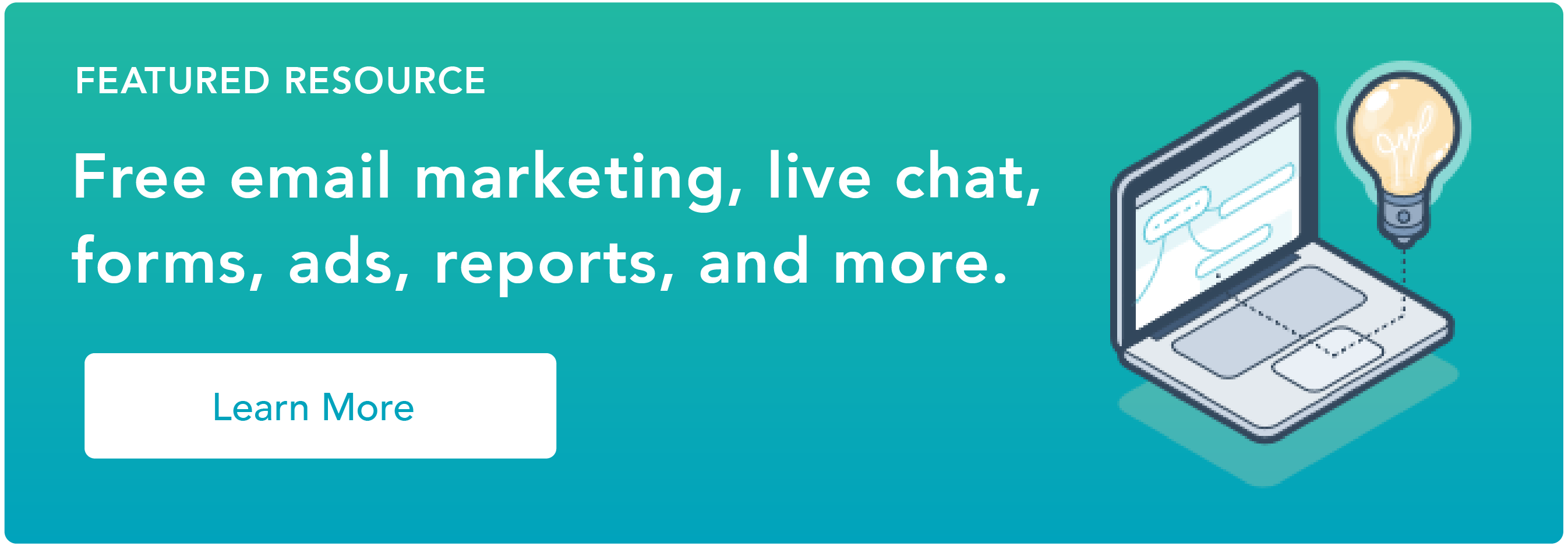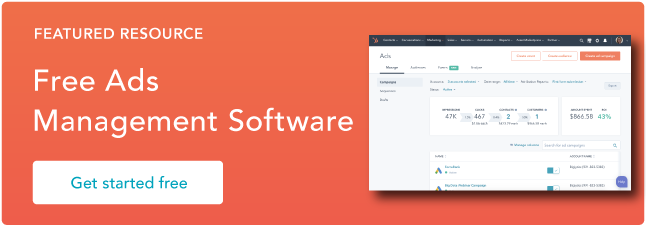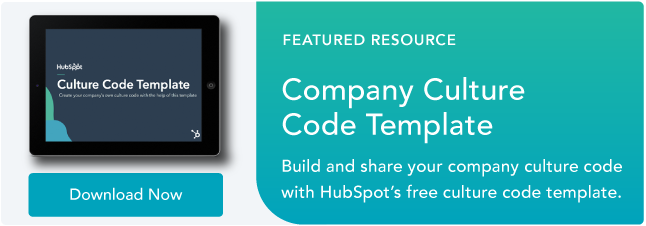The marketing world moves at the speed of light.
And, in 2021, we saw just how quickly the marketing industry can evolve.
In the last year, marketers embraced digital transformation more than ever as they adapted to constantly changing virtual and hybrid business landscapes during the COVID-19 pandemic.
Then, as countries cautiously reopened — and more consumers left the house — some businesses saw slumps in the virtual engagement and online traffic they’d recently relied on.
As a marketer at any experience level, keeping up with these changes isn’t always easy. But, to succeed in the fast-paced marketing world — and maintain a sense of relevance with your audience — it’s vital to stay ahead of them.
To help businesses build cutting-edge and competitive marketing strategies in 2022, the HubSpot Blog surveyed more than 1000 global marketing professionals from both B2B and B2C brands — while also talking to a handful of industry experts — to create this bookmarkable guide of marketing trends to watch in the next year.

1. Influencer marketing will evolve from trend to a common marketing tactic.
When we asked global marketing professionals which trends they planned to invest in for 2022, 34% said influencer marketing, putting it at the top of the list — above other trends like mobile web design and short-form video marketing.
While 57% of marketing professionals that currently leverage influencer marketing say it’s effective, 46% of them plan to increase their investments in 2022. Additionally,11% say it’s the top ROI-generating trend they’ve tested.
How and why has influencer marketing gone from an intriguing trend to a commonly-used marketing tactic? Well, influencers are often masters of the platforms they use and the field or topic they talk about. They already have an audience that is engaged, interested in their content, and influenced by the information they provide.
When marketers collaborate with influencers and industry thought leaders in their industry, they can expand brand awareness and gain fans from the influencer’s own audience.
Can’t afford to hire a celebrity influencer with millions of followers? That’s okay. In fact, more than 56% of marketers who invest in influencer marketing work with micro-influencers.
Micro-influencers are social media promoters with a smaller following (typically, thousands to tens of thousands of followers). Although they have fewer followers, their posts often pack more punch due to their higher level of engagement.
These influencers have found a niche in their industry, too — which is why they’ve started to play a bigger role in converting leads, connecting with audiences, and boosting brand awareness.
Because micro-influencers are still considered “everyday” people (unlike hard-to-reach celebrities), their audiences are actually more likely to trust their opinions and recommendations.
For example, Rosie, who’s known as The Londoner, is a popular travel and lifestyle influencer with over 330k loyal followers who interact and engage with her posts. The below image of a post on profile shows that with almost 36,000 likes, Rosie is garnering almost 11% engagement.

Source
Although it’s tempting to only look at just follower count when determining if an influencer is right for your brand, remember that true influence lives in engagement rates (clicks, subscribes, and purchases).
Want to learn more about other social media trends we discovered in our survey, click here to jump to the section below.
Featured Resources
2. Video marketers will keep content short.
In our survey, we learned that short-form content is the second most effective trend marketers are currently leveraging.
More than 31% of global marketers currently invest in short-form video content, 46% of them consider the strategy effective when it comes to performance and engagement. And, in 2022, 89% of global marketers plan to continue investing in it or increase their investment.
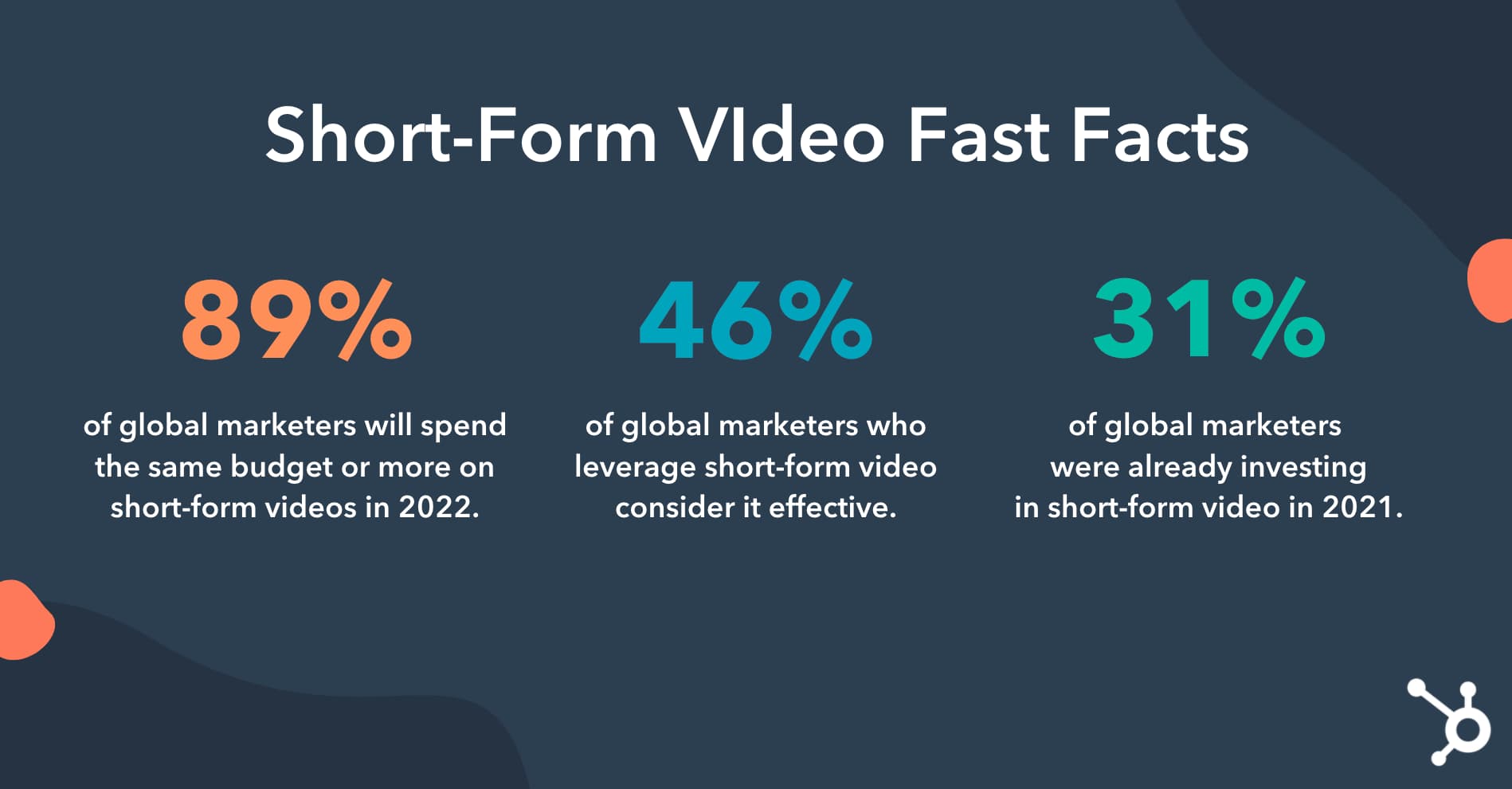
Download image
While long-form videos can offer depth and large amounts of information about a product, brand, or services to audiences, both B2C and B2B marketers have learned that getting to the point with short-form videos can actually be much more effective.
Not only does it take less bandwidth to create a short-form video, but this type of format aligns well with the fast-paced attention spans of online audiences in a variety of demographics. This is likely why platforms like TikTok, Reels, and — in previous years — Snapchat have gained quick growth and marketing interest.
Still not convinced that short-form videos can be effective in your marketing strategy? Check out this great example of a TikTok video from Canva that informs viewers of just how easy it is to make professional-looking graphics with the website.
Jump to our Content Marketing Trends section to see more trends.
Featured Resources
3. Mobile optimization will be even more important.
It’s no surprise that consumers are spending more and more time on mobile devices. In fact, more than half of annual online website traffic comes from mobile devices, including tablets.
And, as millennials and Gen Z audiences continue to grow buying power, mobile-optimized digital experiences will be even more vital to consider as a business owner who markets to these fast-paced, highly connected generations.
Above are just some of the reasons why:
- 33% of global marketers invest in mobile web design,
- 84% of marketers that focus on mobile web design are planning to continue to invest the same amount or more in 2022
- 64% of SEO marketers call mobile optimization an effective investment
And, mobile experiences aren’t just important on brand websites, they’re also important in other key marketing strategies. For example, 56% of marketers who work with email are focused on delivering mobile email experiences to subscribers.
Featured Resource
4. Permanent social media posts could overtake ephemeral content.
While ephemeral content — which often stays published for 24-hours before disappearing (unless it’s saved or archived) — isn’t going away any time soon, brands have seen that permanent social media content — such as standard posts, videos, and live events that show up on a platform’s feed and can be viewed again days later — might be more effective within their marketing campaigns.
Our survey results show that 44% of global marketers plan to increase their investment in permanent social media content, while 8% say it generates the most ROI compared to other marketing strategies they leverage. Meanwhile, 25% of respondents called ephemeral content the “least effective” trend they invested in.
Lastly, 37% of marketers said they plan to decrease their investment in ephemeral content.
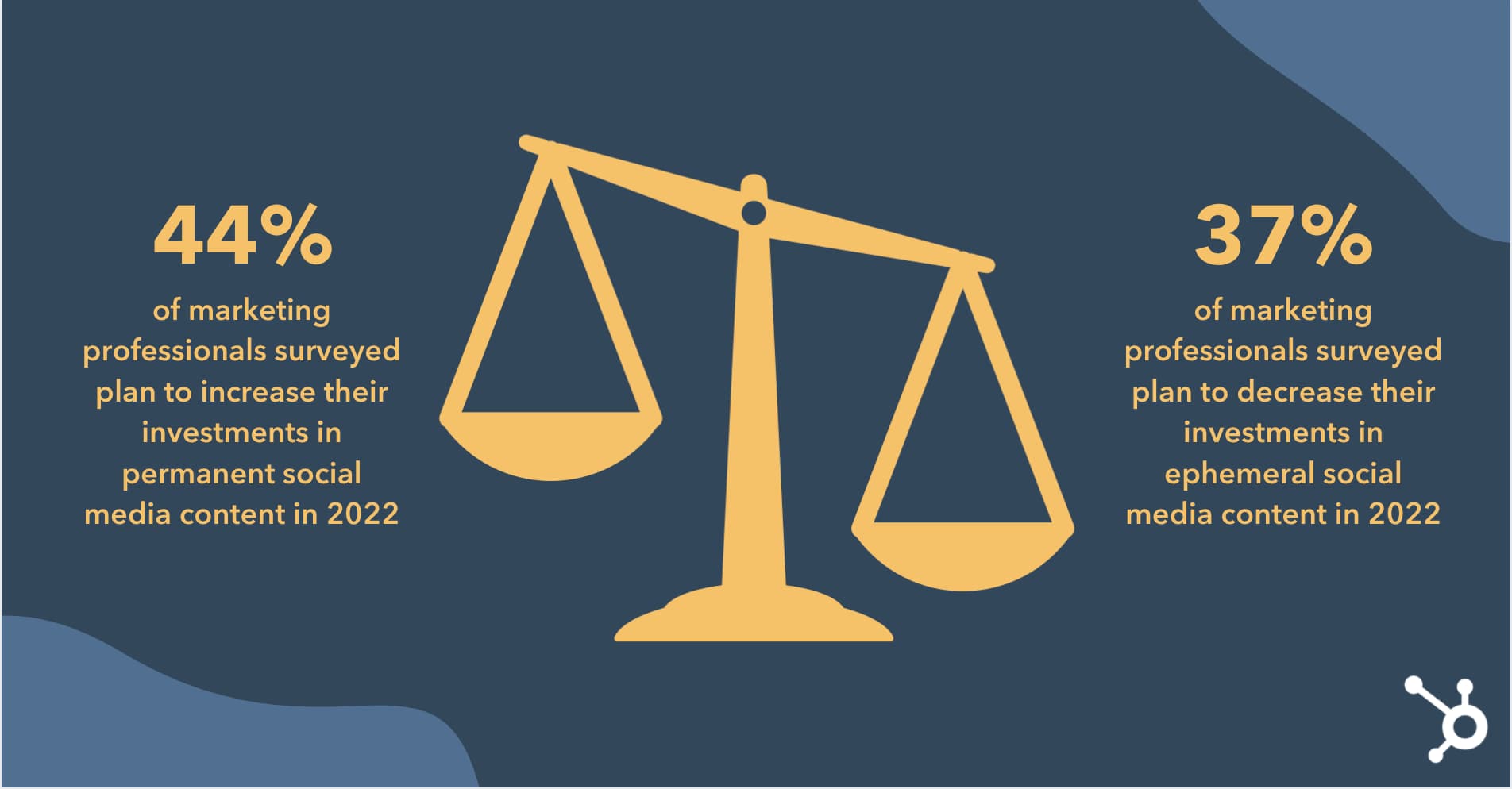
Download image
If you’re focused on the bottom line and generating solid ROI, ephemeral might not be the best strategy to lean into. However, a mix of ephemeral and permanent content can often be the best of both worlds as it gives brands the urgency and engagement of temporary content and the steady engagement, longer-term brand awareness, and discoverability of social media content that doesn’t disappear.
Kelly Hendrickson, HubSpot’s social media marketing manager, says, “The combo of a running clock and a lively audience is a huge opportunity for brands to lean into quick, in-the-moment content that showcases the more light-hearted elements of their brand. Succinctness and clarity are key in content.”
However, Hendrickson adds, “Ephemeral content versus permanent content is often dictated by the social platform, as well as by the audience’s behavior on the platform.”
Ultimately, brands should weigh the pros and cons of which format is best for their brand or campaign.
“It’s critical to use your brand voice and point of view to find how you can serve your audience during that break. Should your presence be inspirational, beautiful, informative, playful, or trendy? They all have a place on Instagram’s permanent wall or in a temporary story, it just needs to match your brand’s message,” says Hendrickson.
While we recommend playing with a mix of ephemeral and permanent content, our data above shows that it will be important for brands to continue to weigh the pros and cons of each format to determine which is right for them.
Jump to this post’s social media section to learn more about the latest trends.
5. Companies will prioritize social responsibility.
Although 31% of marketers say social responsibility is ineffective when it comes to campaign engagement or performance, 45% still plan to invest in it throughout the next year.
Why? Because with the current state of things, social responsibility, ethics, and transparency matter to the modern consumer.
The interest in buying products from socially responsible brands really took during the many global events of 2020 and 2021.
As the COVID-19 pandemic took its toll on the world, it highlighted the pains employees had to endure in the workplace and in politics. Employees became more vocal about their frustrations, inequality, and workplace treatment.
Additionally, early research from organizations like McKinsey predicted that customers would more heavily support brands that demonstrated their care for all customers, employees, and shared causes.
With all of this in mind, companies have begun to pivot social media strategies to focus more on inclusive initiatives, promotions, and offerings, while highlighting causes or missions they support. Although this might not sell products immediately, showing a sense of social responsibility is still both thoughtful and effective.
Senior Lecturer in Leadership and Innovation, Hal Gregersen, shares his perspective on the subject:
“If there can be a perfect storm of opportunity for strengthening D&I [diversity and inclusion] in organizations, I believe it is happening now.,” Gregersen says. “With the pandemic, traditional ways of doing business and of working were upended, and now, barriers to the idea of change are dissolving.”
6. Experiential marketing could make a comeback.
Experiential marketing campaigns enable audiences to step into an immersive experience that is often in a physical place or via an AR/VR platform.
One example of an experiential campaign you might have seen in the past was M&M’s Flavor Room pop-up.

The experience included orb-shaped “rooms,” which were each complete with decor and fragrances unique to a certain candy flavor. The pop-up, which was based in NYC back in 2018, also included snack and drink lounges with M&M-themed cocktails — which, I’m willing to bet, we’re great opportunities for M&M to appear on different attendees’ social pages.
Although immersive experiences like these were fun, effective, and highly shareable on social media, they ran into barriers in 2020 and 2021 as businesses, public venues, and entire countries were forced to shut down public operations in the global pandemic.
And, because producing a branded AR/VR experience is a high-budget bet that can also rely on audiences to have tools like AR/VR headsets or the latest smartphone technology to access the content — fewer small brands have invested in digital experiential marketing.
That’s why it’s not shocking that only 29% of those we polled were investing in experiential marketing in 2021, while just only 14% invested in AR/VR.
But, now, as public areas begin to reopen, and digitally immersive platforms continue to get more accessible to larger audiences, the global marketing professionals we surveyed are putting the possibility of experiential marketing back on the table again for 2022.
According to our research, 58% of marketers who currently leverage experiential marketing call it an effective strategy, while 48% of this group plans to increase experiential investments in 2022. Additionally, 9% of marketers plan to invest in experiential marketing for the first time.
7. More businesses will use SEO to concur search traffic.
As marketers, we must ensure that our websites and content are as discoverable as possible — especially on Google — which can provide both long-term and short-term traffic returns. And, while SEO is not new, it’s strategies are becoming even more ingrained within modern day marketing strategies.
While SEO was the sixth marketing trend those surveyed were leveraging, with 28% of marketers saying they currently used it. Of those marketers, 49% of marketers call it effective while 84% continue to invest the same amount or more into the tactic in 2022.
As the interest and need for SEO strategies grow, so do all search optimization opportunities. As Google algorithms have evolved, SEO has because about much more than churning out basic posts that answer simple search queries. Now, brands are investing in SEO experts who can help them with everything from search insights reports, to multimedia optimization.
Want more data on how brands are investing in SEO, jump to this post’s SEO trends section.
8. Virtual events will continue, but some brands will invest less.
In 2022, we expect to see more hybrid marketing strategies that still allow audiences to embrace virtual events and conferences, as well as physical opportunities. When polling global marketing professionals, the data we received lined up with this prediction.
In 2021, 51% of marketers were investing in virtual events. However, 17% of these marketers plan to decrease their investments in 2022.
Despite losing some shrinking virtual event budgets, marketers won’t be leaving the virtual event space any time soon. In fact, a whopping 80% of marketers plan to invest the same budget or more into virtual events in 2022.
9. More consumers will hear branded audio content.
In the summer of 2021, marketers were perplexed by Clubhouse — an invitation-only audio chatroom app that quickly gained millions of users without publishing any visual content. And, as Clubhouse took our field by storm, platforms like Twitter, LinkedIn, and Facebook unsurprising rushed to start investing in, testing, and/or launching similar features.
Meanwhile, throughout the year, a number of big brands — like HubSpot — expanded their podcast content and networks to meet even more listeners.
Now, as audio content becomes much more common in the online world, marketers might be wondering if this format could benefit their brand.
According to our research, 53% of professionals whose companies leverage content marketing find “podcasts or other types of audio content” effective when it comes to engagement and brand awareness. However, only 1% of marketers that leverage audio content say it yields ROI. Still, 80% plan to invest the same amount or more budget into audio content and podcasts in 2022.
When it came to investments in audio chatrooms, like Clubhouse or Twitter Spaces, we saw a similar theme. Although only 16% of marketers say they’ve invested in this trend, 34% of those marketers find it effective. While, again, around 1% of marketers that use audio chatrooms say it yields ROI, 84% of them plan to continue investing the same amount or more in 2022.
Although audio platforms might not have great monetizing features or conversion paths, this data hints that they still provide the engagement and brand awareness companies need to see from them for a continued investment.
10. Inbound marketing will remain a best practice for growing brands.
While inbound marketing has been around for years, 27% of marketers say they will leverage it for the first time in 2022. while 11% of marketers say it will be their biggest investment in the next year.
In a time of digital transformation, embracing inbound marketing is an incredibly smart move.
Throughout the last two years, the world’s dealt with unprecedented change, and outbound marketing tactics have become even less effective in reaching prospects and leads.
The shift from in-person to hybrid work from home (WFH) business practices have made inbound marketing come to the forefront of effective tactics. For example, there’s been a significant rise in virtual events due to COVID-19 forcing marketers to get creative to catch the attention of customers.
John Hazard, the founder and content strategist at digital marketing agency Lighthouse Creative Group, sees this as a place of opportunity to generate interest despite their typical formulaic production. “Screen fatigue is a big issue for brands.”
Hazard adds, “As virtual events have exploded as a replacement for in-person engagement, every business has tried to roll out events, webinars, and virtual conferences. But most are just PowerPoint presentations or an executive talking with their kitchen in the background. That’s not interesting … So, the race is on in 2021 for polish and production value — graphics, directors, professional hosts, equipment, and no kitchen backdrops.”
Inbound marketing can be a valuable asset to create brand awareness and build trust digitally through refocusing strategy to drive customers to seek out your content.
The process of inbound marketing requires you to product quality, valuable content tailored towards your target audience and buyer personas and their needs.
Why Brands Are Adopting the Flywheel
The marketing funnel is old news. Today, the flywheel — and a subsequent focus on service — have replaced the one-way direction of the funnel and lives at the center of many inbound marketing strategies.
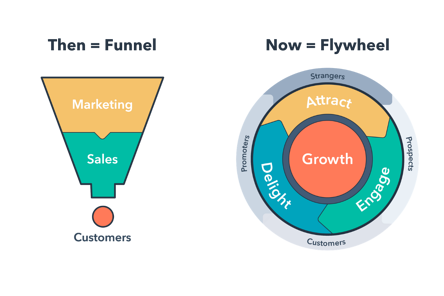 In the world of the marketing funnel, customers were an afterthought. Once they became a paying customer, businesses considered them obsolete — until, of course, it was time re-sign that contract.
In the world of the marketing funnel, customers were an afterthought. Once they became a paying customer, businesses considered them obsolete — until, of course, it was time re-sign that contract.
The flywheel, on the other hand, places the customer in the center. Since word-of-mouth marketing is one of the most powerful marketing tactics, it’s wise to not only serve your customers but also equip them to become advocates for and promoters of your brand. The flywheel illustrates this process: excellent service as its own marketing strategy.
By keeping the flywheel at the center of your marketing efforts, you’ll delight and empower your customers. It’s worthwhile to place a heavy emphasis on customer service and train your team to handle requests and issues.
This will lead to customers who can market for you — they can promote and advocate for your business via their networks both online and in-person.
Featured Resource
11. Consumers will step into virtual reality (VR) and augmented reality (AR) experiences.
In 2021, 35% of marketers were leveraging AR or VR in their strategies. Of those marketers, 42% plan to increase their investment in 2022.
And, of the marketers who didn’t leverage AR or VR in 2021, 9% will experiment with it for the first time in 2022.
Virtual reality is viewing a computer-generated, lifelike scenario. Augmented reality is viewing the real world augmented with visual, haptic, olfactory or visual additions. VR and AR offer different experiences, but both are making waves in the marketing world today.
They’re affecting your lives, too. Ever watched a 360° video on Facebook? That’s VR. What about IKEA’s IKEA PLACE app which helps you visualize virtual furniture in your very real room? That’s AR.
VR and AR are used to supplement and improve customer experiences online and at events. Generally speaking, this is a trend marketers have been slower to adopt due to pricey equipment and bulky headsets. But, as VR glasses and AR apps become more accessible, businesses can expect to add this technology to their marketing strategy.
12. ABM will align more sales and marketing teams.
In 2021, 62% of marketers leveraged account-based marketing, or ABM, to win over customers. And, in 2022, 33% of marketers who haven’t used it plan to invest in it for the first time.
While ABM isn’t new, it is quickly gaining more and more steam and awareness from startups and larger companies alike. For those who are just learning about it now, ABM is a smarketing (or sales and marketing) technique where marketers leverage information about prospects and customers provided by sales teams in order to cater campaigns to them.
Featured Resource:
13. More brands will test out native ads.
In 2021, 24% of global marketers the HubSpot Blog surveyed currently invest in native advertising. Moving into 2022, 23% of those who haven’t leveraged it plan to for the first time in 2022.
Why the growing interest in this strategy? It works. Of the marketers who use native ads, more than 36% say it’s effective, while nearly 5% say it’s their top ROI-generating tactic.
When your brand pays to feature content on a third-party website, you’re investing in native advertising. Unlike traditional advertising, which is designed to interrupt and stand out, native advertising is designed to blend in and promote your brand to a new audience who might otherwise never learn about you.
Because native ads don’t “feel” like traditional ads, consumers are more likely to consume them — in fact, consumers view native ads over 50% more than banner ads. Examples of native advertising can be found on social media, through search engine results, content recommendation platforms (those links to various other content you can click at the bottom of the page to read more on or related to the topic), or in campaigns.
For example, Instagram is a popular social media network that routinely partners with brands for native advertising. By taking advantage of the Instagram Story or Shop features, brands are able to share posts that look similar to the average user’s followers posting style, while subtly advertising a product.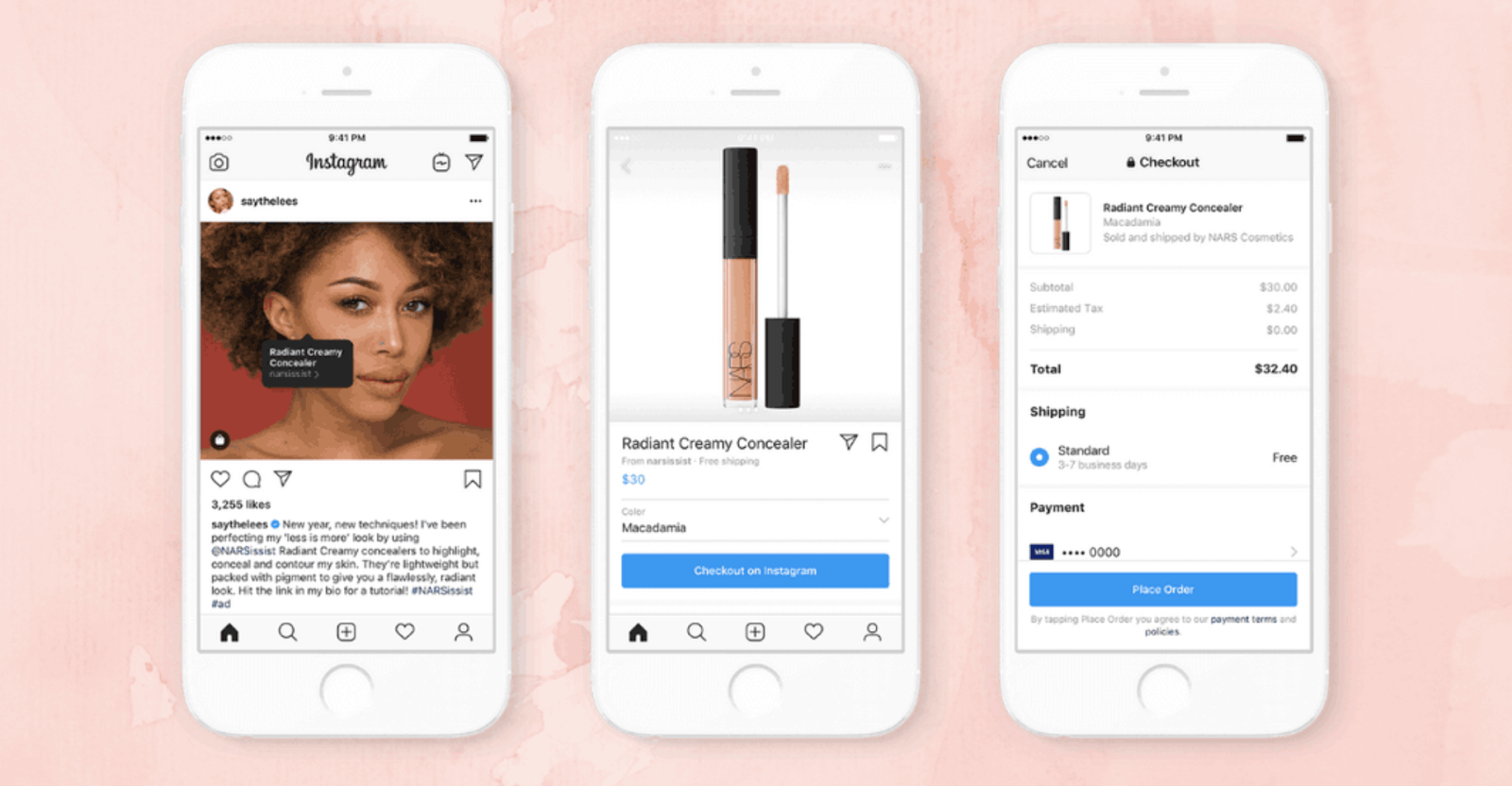
Image Source
To incorporate native advertising in your marketing efforts, look for publications relevant to your brand. Remember to sound natural and avoid coming off as pushy or blatantly promotional.
Now that you’ve read up on the highlights of our Marketing Strategy research, keep scrolling to see a breakdown of trends by category
Content Marketing Trends
At least 47% of buyers view three to five pieces of content prior to engaging with a sales rep, and the majority of them expect brands to create content to gain their interest. That’s why brands all around the world have only grown their investments in content marketing.
In fact, in 2022, the top three roles marketing leaders will prioritize hiring are content creators, content marketing managers, and content strategists.

Download Image
But what content strategies are brands investing in? Below are just a few trends you’ll want to follow in 2022.
Featured Resources
14. Video will remain the top marketing content format.
In HubSpot’s 2021 Not Another State of Marketing Report, video marketing was the most effective marketing format. And, this year, in our own survey, that hasn’t changed at all.
When looking at the most effective content strategies, video marketing appears at the top before blogging or even email marketing.
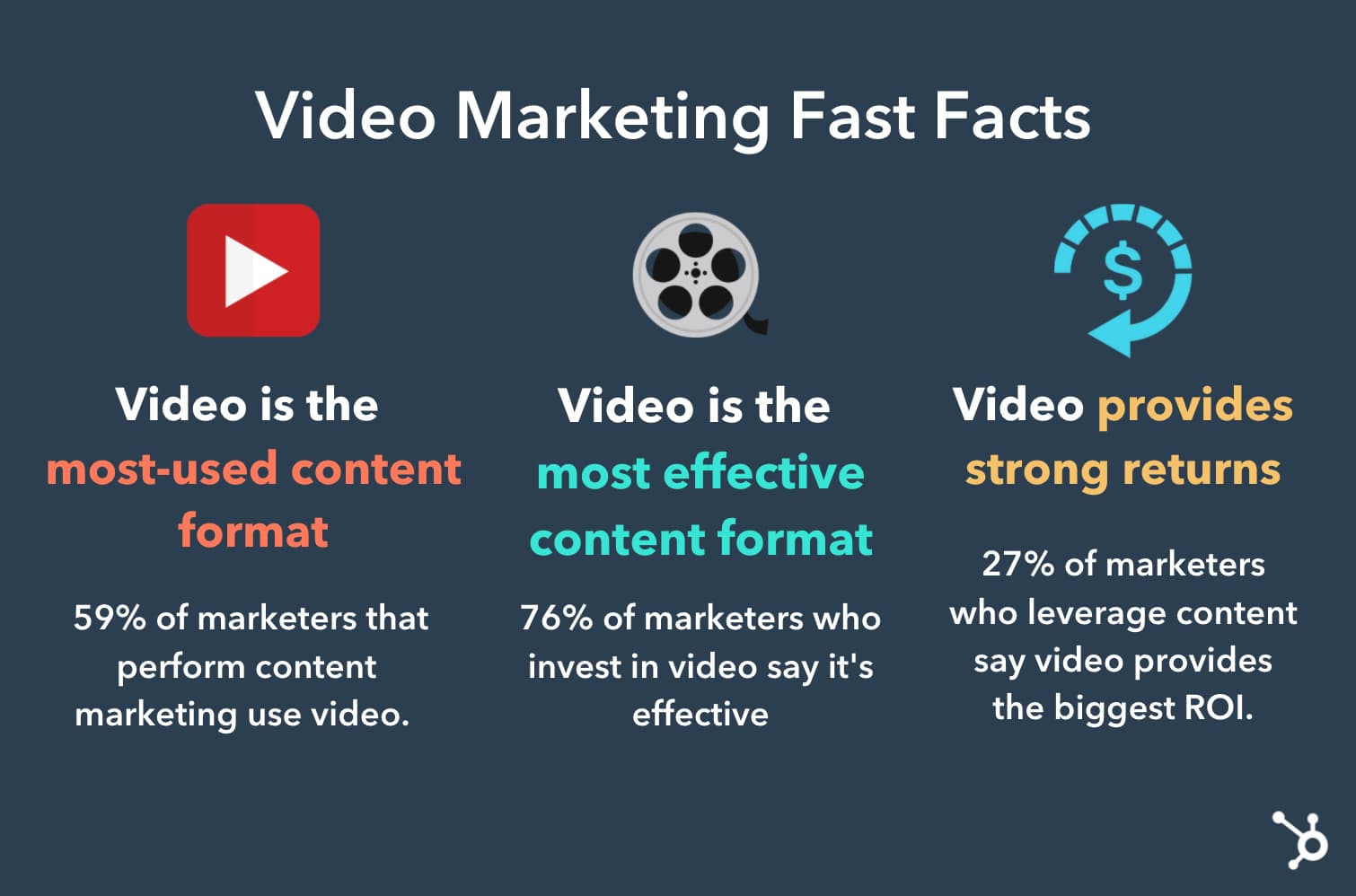
Download image
Our survey found that 59% of survey participants use video in their content marketing strategy, while 76% of marketers that leverage video call it their most effective content format. Not to mention, one in four marketers who use video (or 27%) say it’s the content type that yields the biggest ROI.
“Video creates a deeper connection with your potential customer base and it is easy for brands to repurpose video content into podcasts and text-based content,” Neil Patel CMO and Co-Founder of NP Digital, says. “But on the flip side if you create text or audio content first, it is harder to turn it into video. So in 2022 look for brands to create more video content. It will be done in the form or just straight video, short clips like reels and even live streaming.”
In the past, video creation and marketing strategies were limited due to costly resources and production. Today, it’s much more accessible. With a lower-cost barrier, video has become less intimidating to incorporate into your marketing efforts.
“2022 will be the year of video. Why? Because organizations have finally gotten more comfortable with it and realize it’s a way to engage their audience, communicate offerings, and provide infotainment,” says Aytekin Tank, Founder & CEO of JotForm.
“Our company, Jotform, has been ramping up our video efforts on YouTube. We have over 16,000 subscribers and have seen a huge increase in site traffic and signups from investing in video on this platform,” Tank explains. “Like many other B2B and B2C companies, we’re going full force with video and expect to ramp it up even further in 2022.”
You don’t have to hire a production team or marketing agency; all you need is a smartphone, such as an iPhone, and affordable editing software. Don’t believe us? This post highlights how our own video marketers created video content from home at the beginning of the COVID-19 pandemic.
15. Blogging isn’t going anywhere.
Blogging has been a commonly used marketing strategy since brands started building their own websites. But, the age of tthis tactic shouldn’t be a sign that it’s out-of-date. In fact, blogging has been used for so long simply because it works.
While 48% of companies with a content marketing strategy blog, 56% of marketers who leverage blogging say it’s effective and 10% say it’s the content type that generates the biggest ROI.
This data from marketers isn’t too shocking. When polling consumer audiences recently, our research suggested that most consumers read blogs multiple times per week and have purchased something from a brand after reading the company’s blog.
Aside from providing consumer engagement and potentially conversion, blogs also provide a major key benefit to your website or online pages: search discoverability.
Ultimately, sites with robust blogs have more search potential and can implement SEO strategies much easier than sites that don’t.
Think about it this way. If a prospective client wants to hire a virtual accountant, and your firm’s site has a blog post that highlights tax tips or strategies your accountants use, this person might find your post or website via Google search, read your post and explore your website, and then decide that they want to contact you for a consultation or accounting assistance.
If you haven’t considered a blog by this point, but are intrigued by this data, check out these resources to help you build out your own strategy:
16. Case studies will continue to drive leads and brand credibility.
Longer-form case studies offer prospects an incredibly deep and exclusive look into how people or brands benefit from a product, service, or strategy. While some businesses place them publicly on their web pages to persuade a potential buyer as quickly as possible. others might gate them as free PDFs that require a lead conversion to be downloaded.
Although many marketers, such as those in B2C industries, don’t leverage case studies, those that do find them effective. In our survey, 64% of marketers who launch case studies found them effective and 15% said they brought the biggest ROI of the content formats they leveraged.
Additionally, case study usage in content marketing is only growing: 37% of marketers we polled plan to use case studies in their marketing strategy for the first time in 2022.
17. Marketers will embrace data with infographics.
If a picture paints a thousand words, infographics could paint at least double.
Infographics not only have the shareability and visual appeal of a nice photo — but they’re also packed with helpful data and informative information. This makes them incredibly engaging to web visitors and social media audiences alike.
According to our research, 38% of marketers plan to leverage infographics for the first time in 2022, while 45% of marketers are already using them.
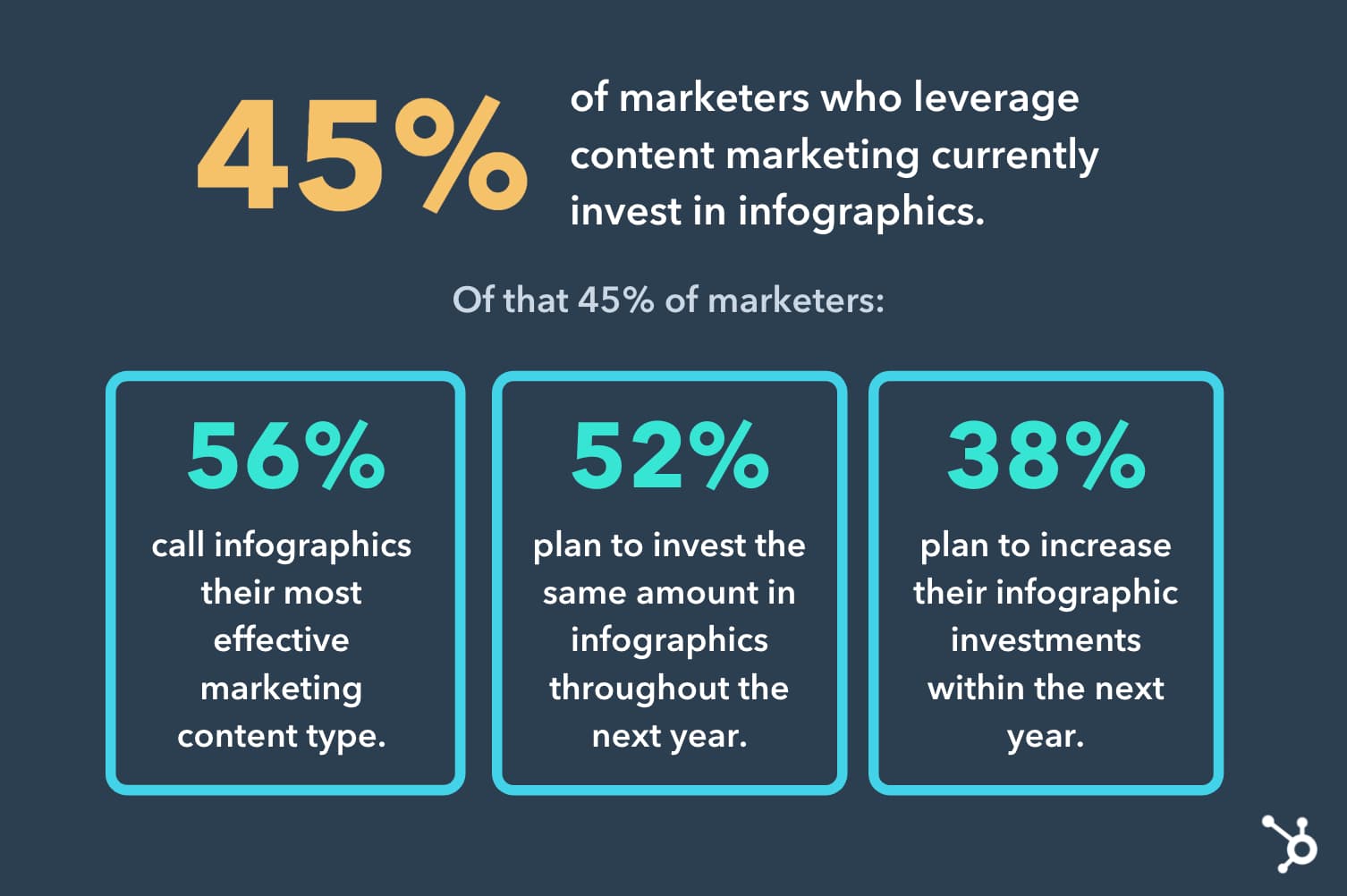
Download image
Of the marketers who regularly use infographics in their content strategy, 56% say they are their most effective content type.
Ultimately, credible data can help marketers, bloggers, and content creators tell compelling and persuasive stories. Why else do you think we surveyed hundreds of marketing professionals to create this content?
Featured Resources
Social Media Marketing Trends
In the U.S. alone,
79% of people have some type of social media account — and globally, there are over 3.7 billion social media users.
This is why social media marketing is a popular channel that’s become a part of almost every business’s greater marketing strategy. Social media marketing allows you to authentically connect with your audience on a personal level, humanizing your brand.
18. Live content will be a leading social media format.
Of the social media marketers we polled in our Marketing Strategy survey, 68% said that audio chat rooms (such as Clubhouse rooms and Twitter Spaces) were the msot effective social media content, while 59% said they same for live video.
And, while 9% of those respondents say that live video content drives the biggest ROI of all the social media content types they use, 96% of those investing in live audio content plan to spend the same amount or more on it throughout 2022.
Today, consumers are increasingly looking for relatable and authentic content — especially from brands. Live video streams and audio chat rooms enable brand audiences to connect even more with these audiences while also discussing their brand, products, expertise or mission. On top of being able to see experts in a more uncensored and authentic environment, live audio or video streams also often have interactive features, such as comments, engagements or hand-raise opportunities that allow audiences to interact directly with those hosting a stream.
19. TikTok will continue to gain brand interest.
Brands have been trying to untap the true power of TikTok ever since it first began to go viral three years ago. Now, with well-over 1 billion global users, TikTok has positioned itself as an app for a wide variety of audiences and marketers. It’s also begun to launch a number of new advertising and marketing features for businesses of all different sizes.
That’s why it isn’t shocking that a whopping 67% of marketers plan to increase their investment in TikTok in 2022. Meanwhile, 10% of marketers who use social media say TikTok will be the platform they invest the most in throughout the next year.
20. Most marketers will focus on just three to five social media platforms.
Every business has its own sweet spot when it comes to the number of social media platforms they should use. While only 11% of social media marketers we polled use one to two platforms, and only 7% use seven or more, 64% currently leverage three to five.
Managing three to five platforms is realistic. This range allows brands of all sizes to expand their reach to different audiences while also giving social media marketers a realistic list of platforms to master without stretrching their bandwidth during the work week.
Here are a few questions that can help you determine how many platforms you should really be on:
- How many social media marketers are on your team?
- Which social media platforms have audiences that best align with your targets?
- How much time will it take to master a strategy on each of the platforms you’re targeting?
- Are there any platforms that won’t benefit your overall marketing strategy right now?
- Are there any platforms you can easily repurpose engaging content between? (such as TikTok and YouTube Shorts)
By asking yourself some of the questions above, you can determine how much time your social team and brand will need to build an effective and engaging strategy on each platform, and prioritize which platforms you should really focus on.
Featured Resources
Search Engine Optimization Marketing Trends
61% of marketers say improving search engine optimization (SEO) to grow their organic presence online is their top inbound marketing priority.
Are you one of these marketers? If so, have you figured out how exactly you plan to improve your SEO and organic presence? When you optimize for specific types of consumer behavior, you’ll help your business become more discoverable online.
21. Keyword optimization will be a key priority.
By far, one of the HubSpot Blog’s most vital tactics is our Search Insights Report. This report highlights all the keywords we would like to leverage and all the blog posts we’ll need to create or update to rank for those keywords on Google.
But, we’re no longer one of the only blogs using a SIR anymore. In fact, 47% of marketing professionals who leverage SEO say their companies use search insights reports in their strategy.
If you don’t have a huge content team, a large amount of extra time, or an SEO expert to create a large-scale search insights report, don’t worry. Although nearly half of SEO marketers we surveyed use search insights reports, 55% said they were at least trying to optimize their content with search-driven keywords. And, this strategy isn’t too expensive or time-consuming.
For example, you can use tools like Ahrefs or SEMRush to do some quick SEO keyword research related to your business, products, or upcoming content to learn where you can boost your content with keyword-optimized titles, subheads, body text, or descriptions.
22. Web teams won’t forget about video and image SEO.
SEO doesn’t just involve changing the text on a page. It can also involve choosing and optimizing the right videos or images for a page to help it rank in Google images or search engine video carousels.
While optimizing images could involve compressing files to increase page speed and adding keyword optimized alt text to an image, video optimization strategies could involve embedding an video with a similar topic or keyword into a blog post.
Currently, 53% of marketers who leverage SEO have a strategy for optimizing videos and images. Of those marketers, 49% say image and video optimization is their most effective SEO tactic.
23. Link-building will help brands grow authority — and search rankings.
When sites with solid rankings begin to link to yours, Google’s crawlers note that your site might be credible and also have solid authority in your space. This can then tricker your Google ranking to go up. This, ultimately, is the goal of link-building — or getting other sites to link to yours.
Although writing highly shareable content, reaching out to share it with other websites, or ensuring that your post gets links can be time-consuming and challenging, research shows that this time and effort pays off. Of the 48% of SEO marketers that use backlinking and link building, 63% say its their brand’s most effective SEO tactic,
24. Historical optimization will help old web pages get new traffic.
Instead of coming up with new ideas, marketers are going to be taking what’s worked in the past and optimizing it for the present.
In SEO, keeping your content up to date and full of rich, engaging content will outweigh older work that is lacking in keyword relevancy with old statistics and links. Not only that, but taking existing content and repurposing it for a new podcast, webinar, or blog post can be an efficient way to keep it relevant in search engines.
While one in four SEO marketers leverage historical optimization in their strategy, 29% say of those marketers say it’s an effective SEO strategy.
25. Voice search tactics will stay on the SEO radar.
Although just 12% of marketers the HubSpot Blog surveyed are currently leveraging voice search tactics in their strategy, 34% of them say voice search is the most effective trend they used in 2021 and 41% plan to increase their investments in 2022.
And, although voice search might seem like an emerging technology, these increased investments were bound to happen.
By now, you’ve probably used one of the many virtual assistants out there, like Siri, Alexa, or Google’s virtual assistant.
Not only do these digital assistants answer short, informational queries such as “Who is the actor in Mission: Impossible?” or “What’s the weather in Boston today?”, but they’ve also started to process more local, conversational, and customized searches. These may sound like, “Where’s a nearby coffee shop I can work from today?”, “How late is it open?”, and “Do they serve iced coffee?”
Because of this emerging behavior, businesses need to respond and change the way they frame information. Instead of catering to Google’s manual search algorithm, optimize your content by framing it around questions.
When you implement voice search tactics this way, you’ll empower your users to get the answers they want and need. They can ask a question in that conversational tone we mentioned above and, in return, they’ll get a high-quality and accurate response. They can multitask while asking questions and receiving answers, as well as get those answers they’re looking for more quickly.
Aja Frost, Head of English SEO at HubSpot, says: “Businesses should look at a topic and say, ‘What questions could users ask about this?’ Then, they should plan sub-topics accordingly and look for opportunities to insert questions as headers. This will allow voice assistants to easily grab questions and recognize content as solutions.”
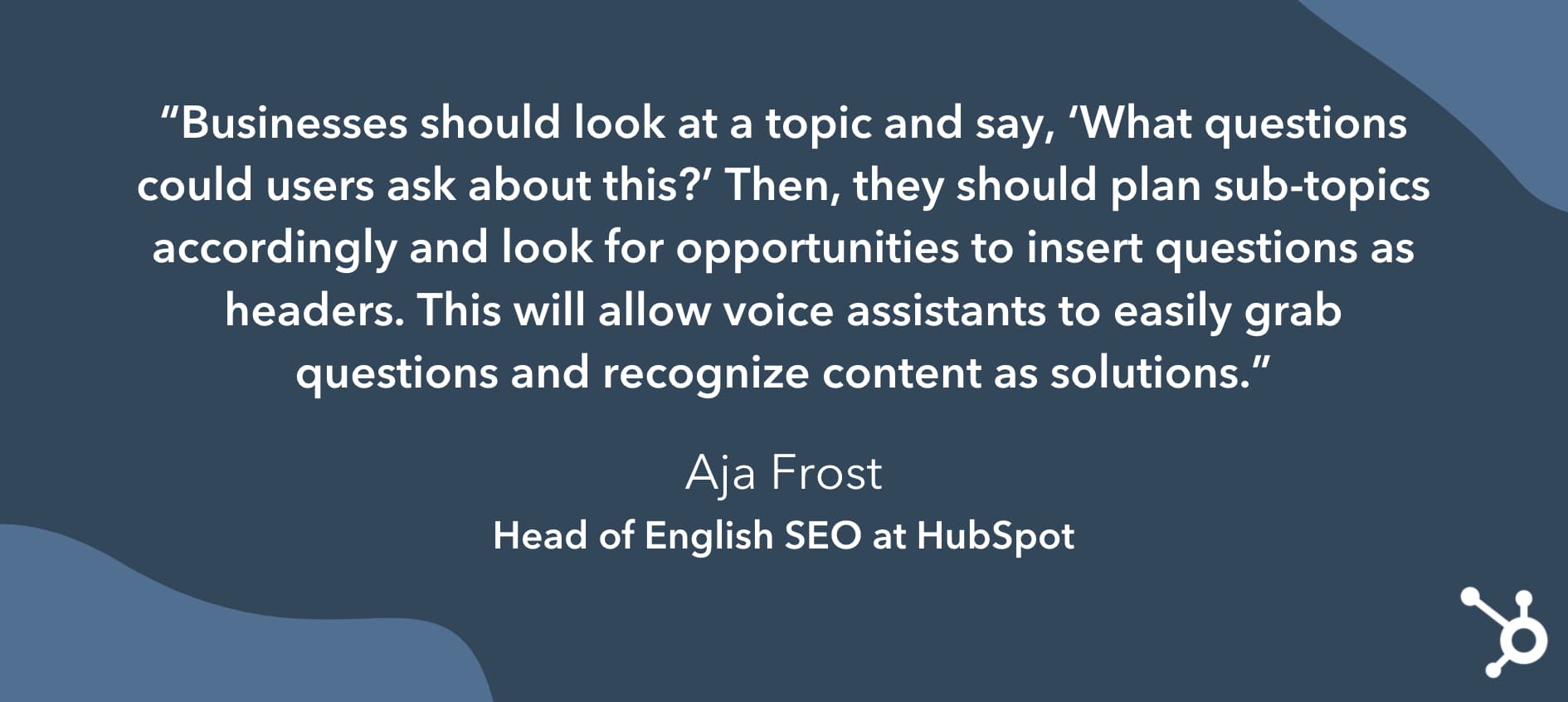 Download image
Download image
Frost also encourages businesses to look for featured snippet opportunities, which are the information previews Google provides when users search for definitions or questions. Voice assistants typically pull responses directly from these boxes.
Featured Resource
AI and Automation Marketing Trends
A whopping 70% of marketing professionals currently use automation. Meanwhile, 33% of marketers who don’t use automation plan to implement it in 2022. Below are just a few ways they plan to start or continue leveraging automation in the next year.
26. Brands will invest even more in automation and AI.
Artificial intelligence refers to a subset of computer science that teaches machines to do things that would require intelligence if done by a human. Think of tasks like learning, seeing, talking, socializing, reasoning, or problem-solving. When completed by computers, they’re considered AI.
AI has completely infiltrated our daily lives and tasks. When Spotify recommends a song, Facebook recognizes and tags a person, or you text a friend using Siri, you’re tapping into AI. As we utilize AI more and more (especially as consumers), marketers and businesses will need to respond.
The point of AI isn’t to replace humans or the need for a human touch. It’s to improve and expand our ability to connect with our audience and help them solve their problems quicker and more thoroughly. AI is also incredibly helpful when collecting and analyzing data and making data-driven decisions.
Here are a few ways we see companies embracing AI today:
- Chatbots and virtual assistants: Bots provide quick, easy solutions to problems of all levels of complexity. No longer is the need for live chat or a literal one-to-one digital conversation. Scroll down for a more detailed explanation of chatbot trends.
- Content creation and curation: While you shouldn’t expect a bot to write award-winning marketing content just yet, you can use them to streamline writing short pieces of content, like tweets, basic web articles, or automated emails.
- Predictive Lead scoring: Automated lead scoring tools allows marketers and sales teams to focus more time on selling and making deals, and less determining which leads are actually the strongest prospects.
- Predictive marketing: Wondering if an audience will engage with your campaign, ad, or content? Predictive marketing leverages historical analytics, such as audience behavior data, to help brands estimate which tactics will provide the best engagement.
27. Chatbots will continue to streamline conversational marketing.
Did you know that more than half of consumers expect a response within 10 minutes to any marketing, sales, or customer service inquiry? How can this be humanly possible?
It’s not … for humans, anyway. This is probably why 40% of marketers who use automation leverage chatbots.
Bots are powered by a computer program that automates certain tasks, typically by chatting with a user through a conversational interface. Bots are made possible by artificial intelligence which helps it understand complex requests, personalize responses, and improve interactions over time.
Bots provide the perception and dedication of a 1:1 service experience while working with hundreds of customers — something that no customer service representative or team would ever be able to do.
To the consumers who hate repeating themselves to multiple sales or service representatives (33%, to be exact), listen up — chatbots are and will continue making your lives much easier. If used correctly, they manage conversations at scale and aggregate data from multiple sources of data, from calendars to knowledge bases to blog posts and videos.
Jon Dick, SVP of Marketing at HubSpot, says: “It’s on you to make things as easy as possible.
“Do your buyers want to use live chat? You should give it to them. They’ve had the same problem three times in the last month? You should already know, and have a plan to fix it,” Dick concludes.
Featured Resource
Privacy Marketing Trends
28. Brands will need to give customers more control over their data.
In the marketing world, data is highly valuable — and not just valuable to you, as a marketer or business owner. Whether it’s an email address, credit card information, or smartphone location, consumers also view their data as precious and privileged — and it’s your responsibility to take care of it.
Whether a software company, bank, government agency, or lemonade stand, every business operates using data. It’s the lifeblood of all things marketing, sales, service, and more.
But, when precious information is misused or siphoned into the wrong hands, it leads to a strong distrust in businesses and potentially exploited consumers
That’s why the General Data Protection Regulation (GDPR) was enacted.
GDPR is an effort by the EU to give greater control to consumers over their data. Under the GDPR, organizations must ensure that their data is collected legally and safely and that those who collect and manage said data will protect it and respect consumers’ rights.
Following the GDPR guidelines might seem like a burden, but being fined for non-compliance will feel much heavier; fines range from 10 million euros to 4% of a company’s annual global revenue.
And — GDPR isn’t the only entity enforcing privacy mandates in 2022. In fact, companies like Google and Apple are now taking stands for user data as well.
In 2021, an Apple IOS launch enabled IPhone and IPad users to determine which apps could track their third-party data, which is often used for hyper-targeted ads.
in 2022, Apple will finish rolling out another IOS update with additional email privacy protections features for Apple Mail users. Meanwhile, Google will be discontinuing the use of third-party cookies on Chrome, while encouraging advertisers to leverage its Privacy Sandbox instead.
Ultimately, brands and governing bodies are increasingly aiming to give users more choice when it comes to releasing their data. And, while it is great for the consumer, businesses who leverage personal data to run campaigns will need to create alternative strategies and pivot plans incase they lose access to crucial datapoint.
Use Marketing Trends to Grow Better
You’re up to speed … for now. And, as long as you’re keeping a thumb on the pulse of marketing trends — and always remain open to change — your business won’t fall behind.
But, if you’re feeling overwhelmed by the idea of keeping up with all these insights, don’t worry. The HubSpot Blog will be publishing regular Marketing Strategy research pieces with data from hundreds of marketing professionals in the coming months and will continue to update this post as new trends emerge.
Want even more data and tips from marketing experts? Reflect on 2021’s key strategies with the State of Marketing Report below.
Editor’s note: This post was originally published in August 2019 and was updated in November 2021 with updated HubSpot Blog trends data.


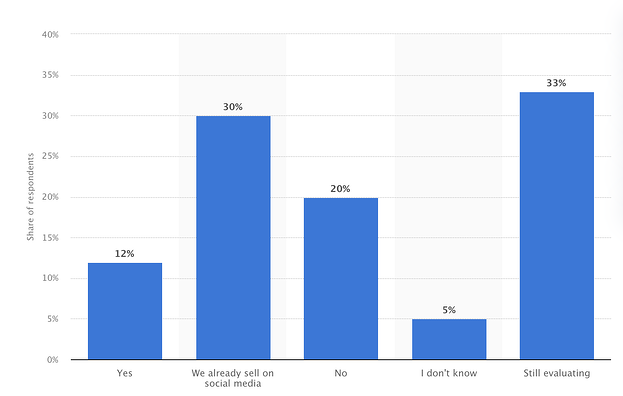
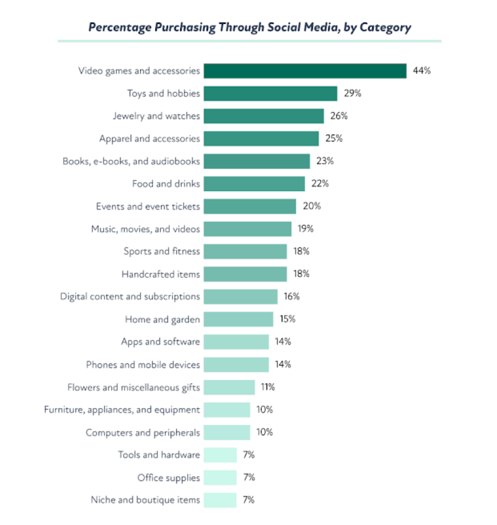
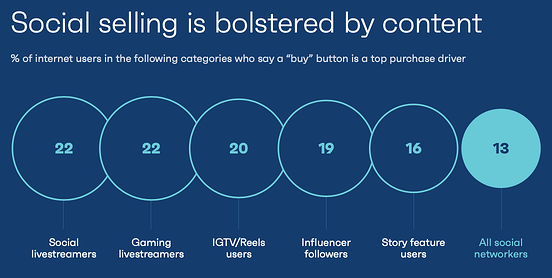
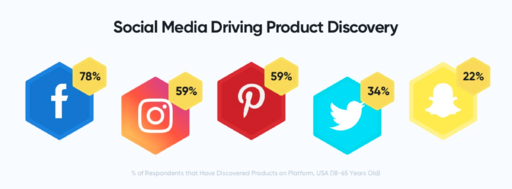
![]()


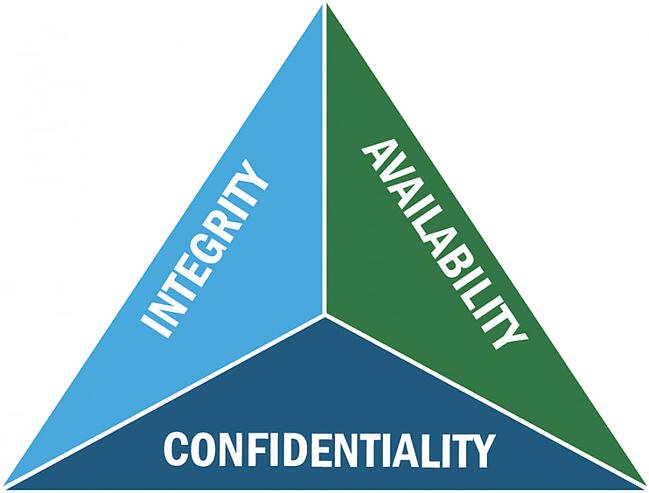



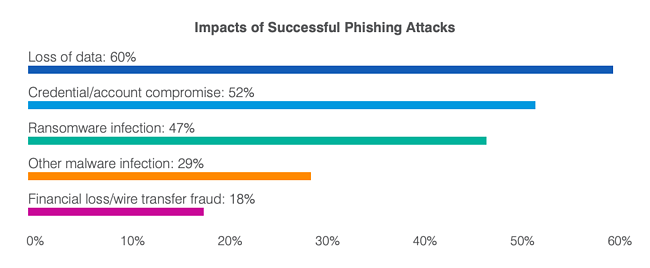
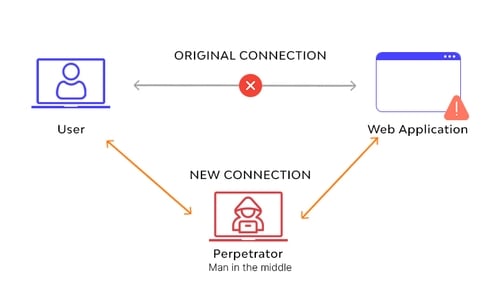
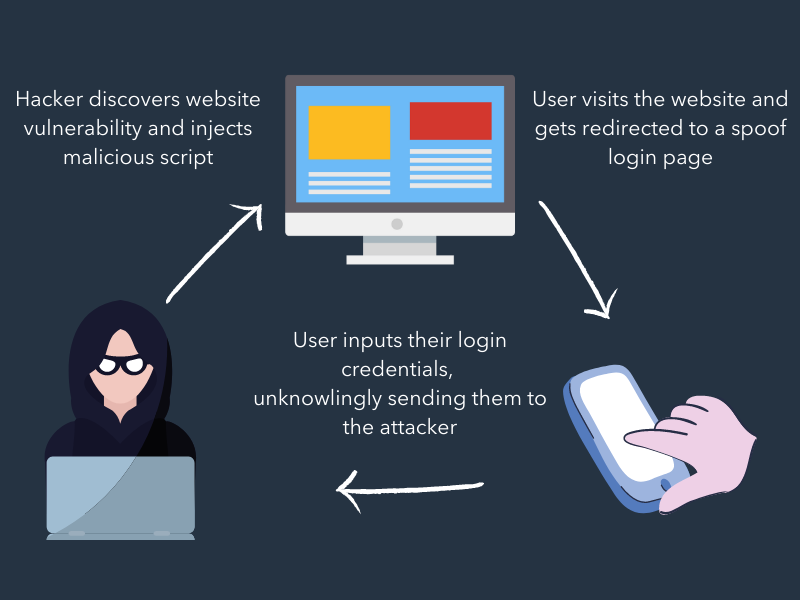

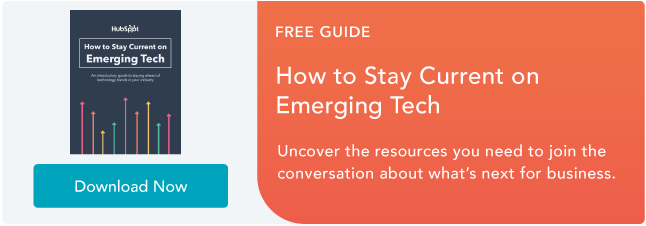





 In the world of the marketing funnel, customers were an afterthought. Once they became a paying customer, businesses considered them obsolete — until, of course, it was time re-sign that contract.
In the world of the marketing funnel, customers were an afterthought. Once they became a paying customer, businesses considered them obsolete — until, of course, it was time re-sign that contract.




![Download Now: Social Media Trends in 2022 [Free Report]](https://i4lead.com/wp-content/uploads/2021/11/3dc1dfd9-2cb4-4498-8c57-19dbb5671820-1.png)
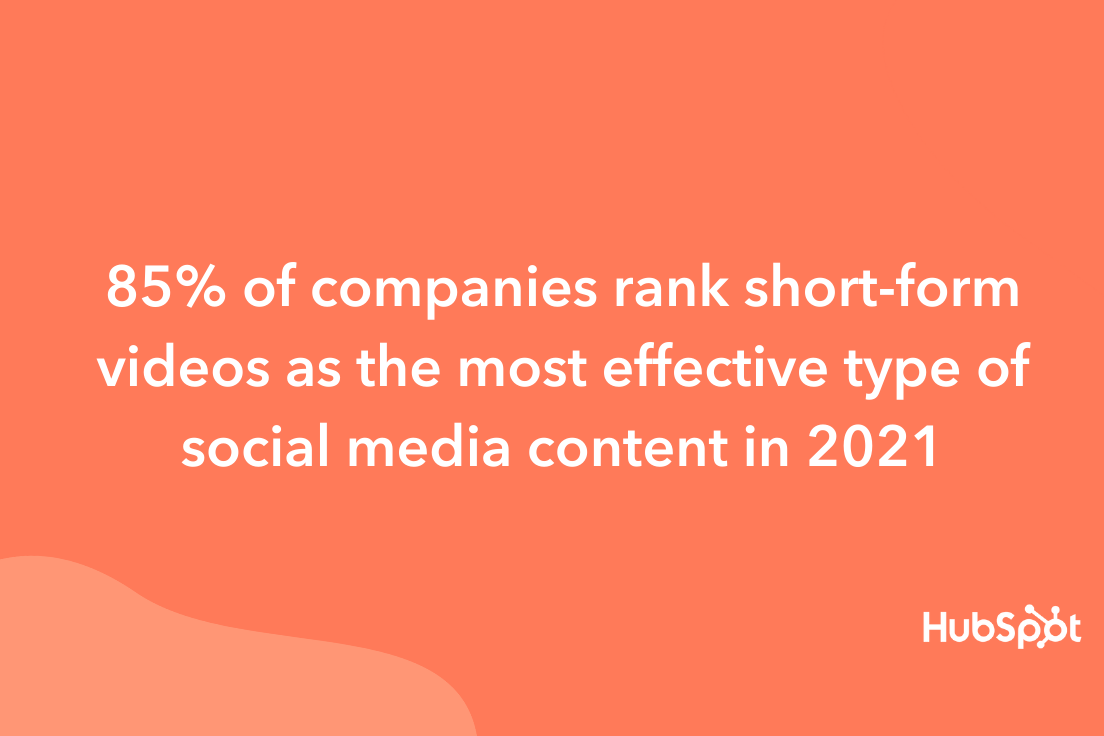
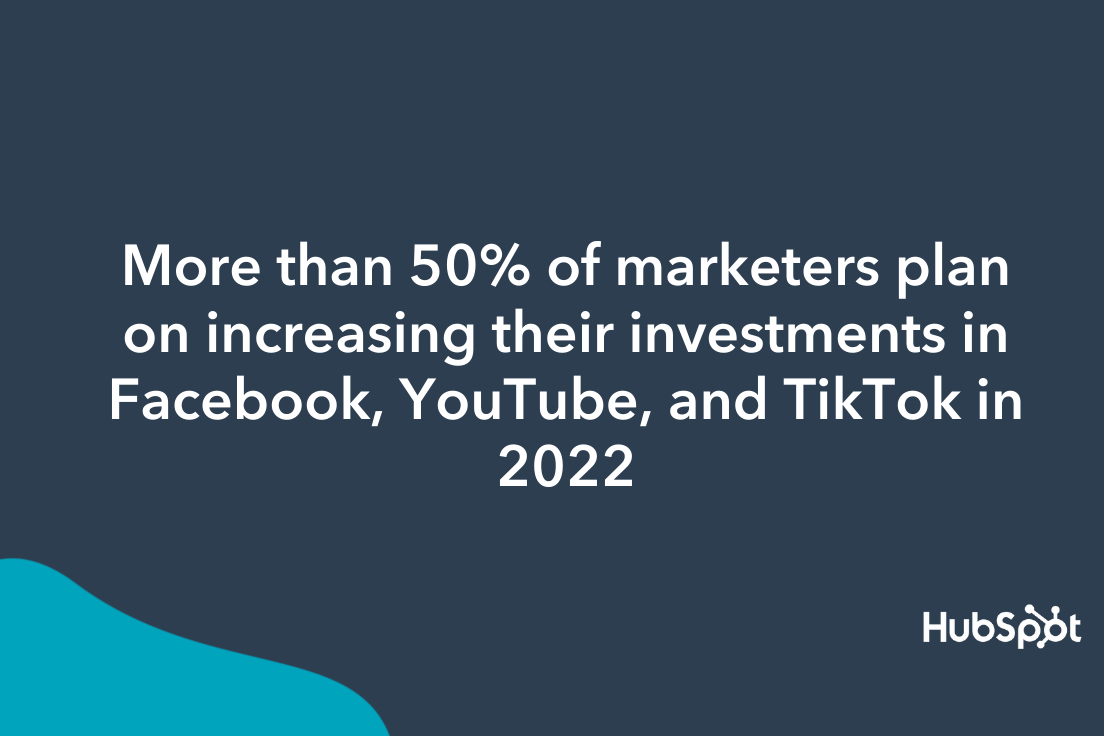
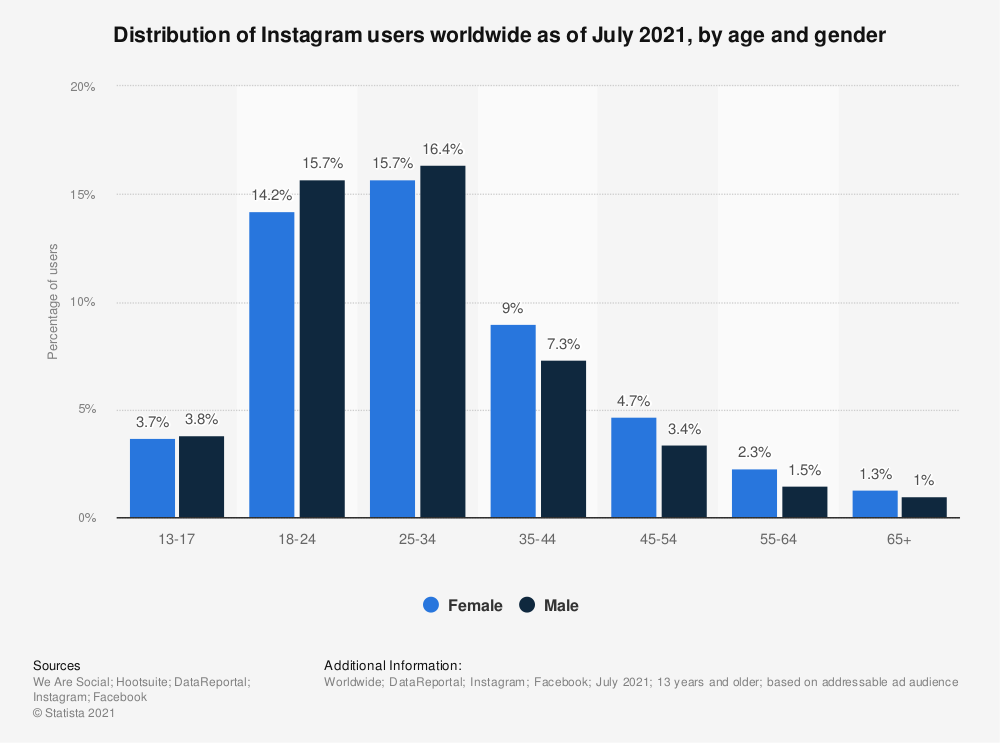
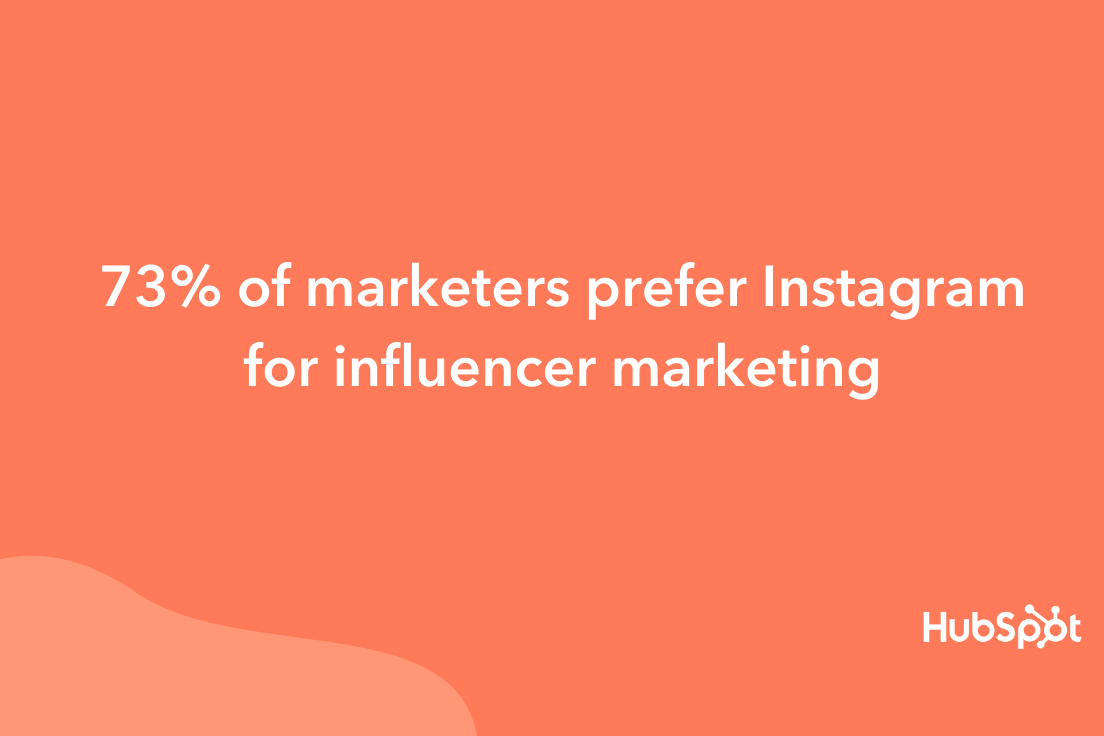
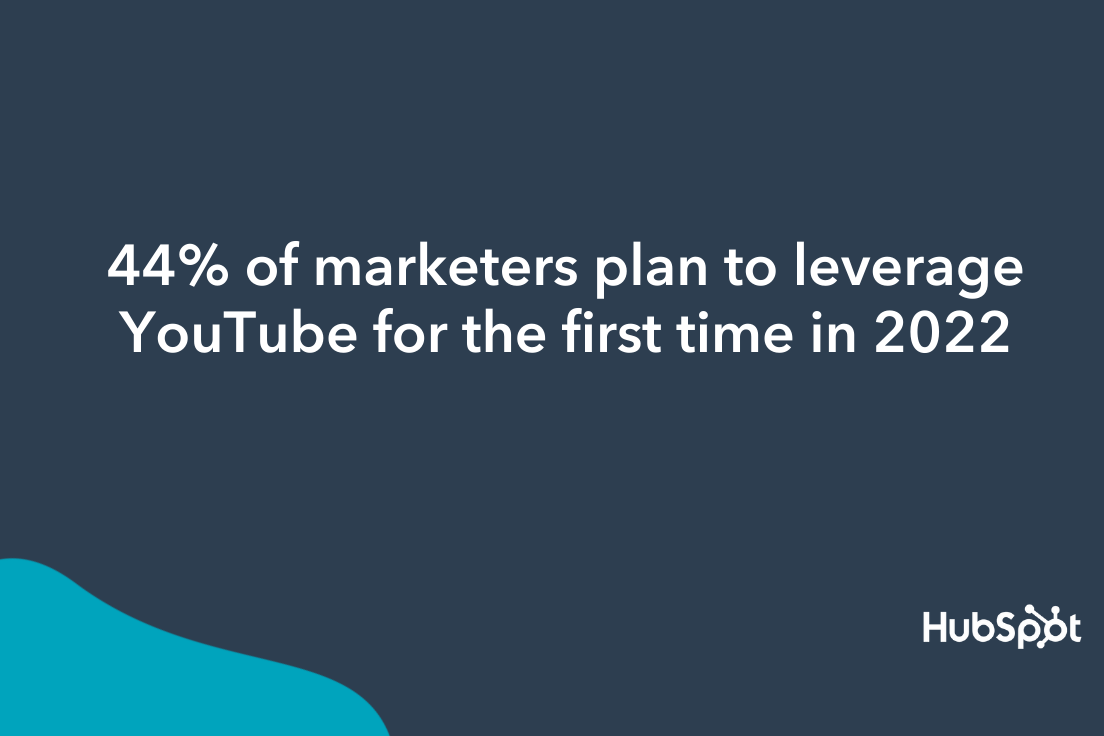
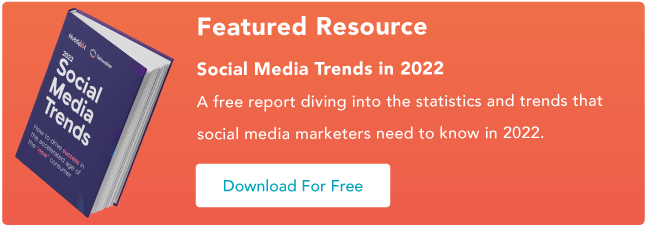

![→ Download Now: 12 Resume Templates [Free Download]](https://i4lead.com/wp-content/uploads/2021/11/4ec95757-585e-40cf-9189-6b3885074e98.png)

![Access Now: 10 Competitive Analysis Templates [Free Download]](https://i4lead.com/wp-content/uploads/2021/11/b3ec18aa-f4b2-45e9-851f-6d359263e671.png)
